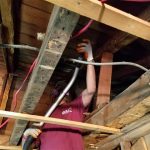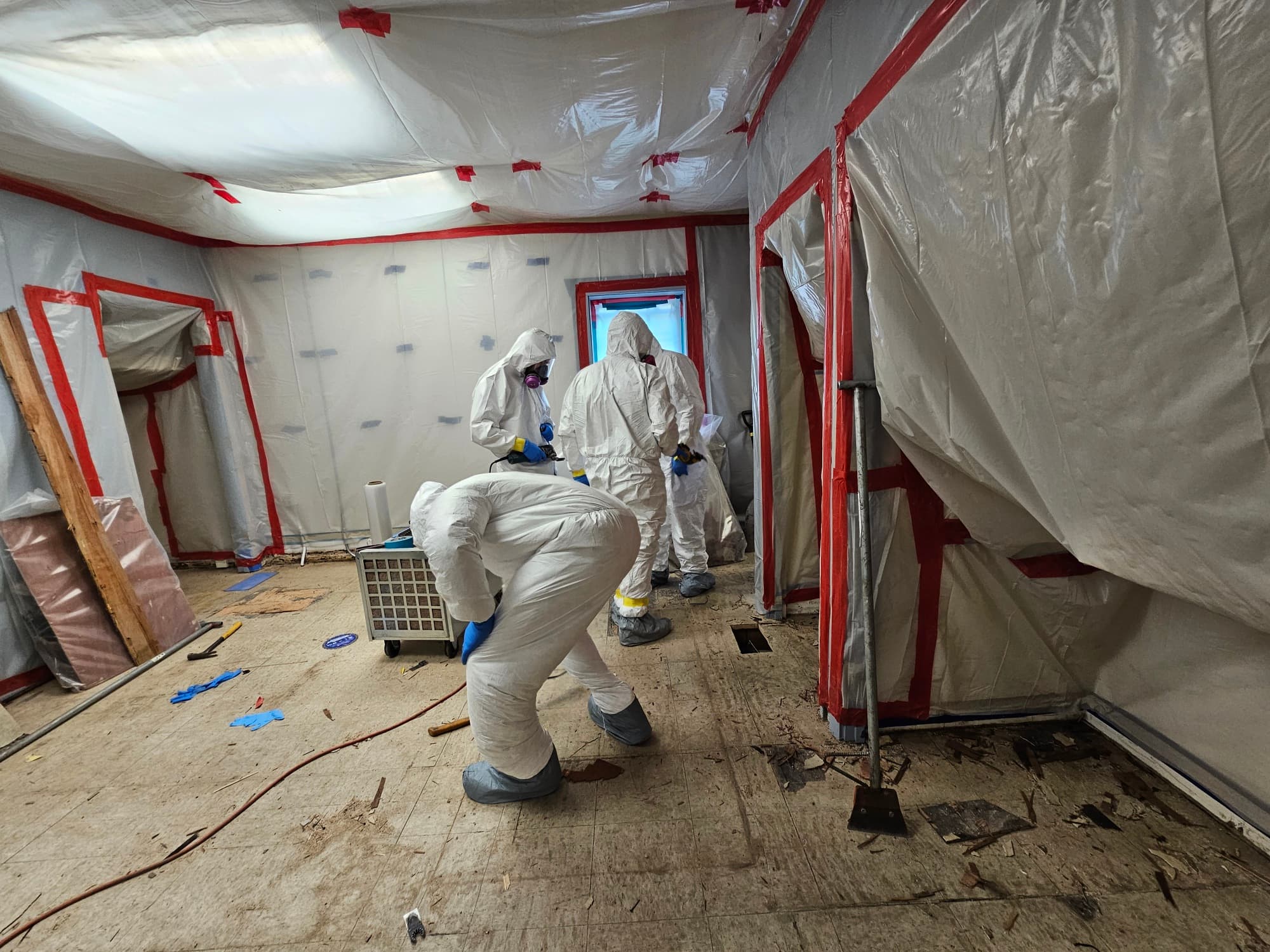
DAI is ready
to help you
Asbestos

Asbestos Abatement
Asbestos is a mineral made up of tiny fibers that, if inhaled or ingested, can be dangerous and life-threatening. Beginning in the 1870s, asbestos had been used in building materials that are fireproof, chemically resistant, and do not conduct electricity. After World War two, asbestos became more widely used as a spray-on method of fireproofing in large multi-level buildings. It was not until the 1950s that a negative correlation was made between health and exposure to asbestos.
There are various types of asbestos found in building materials, all with varying uses and risk levels. The most dominant type of asbestos is chrysotile, or “white asbestos”, which makes up about 99% of world asbestos production. Other types of asbestos include amosite “brown” asbestos, actinolite asbestos, anthophyllite asbestos, crocidolite “blue” asbestos, and tremolite asbestos.
According to the Environmental Protection Agency (EPA), asbestos was used in a wide range of building materials for insulation and can be found in many products such as:
- Vermiculite insulation in attics and walls
- Vinyl floor tile, including backing and adhesives
- Roofing materials and siding shingles
- Textured paint in walls and ceilings
- Walls and floors around stoves and fireplaces
- Pipe insulation
- Oil and coal furnaces with insulation
Any disturbance of these materials could cause asbestos fibers and particles to be released into the air. This can occur during product use, demolition work, building maintenance and repair, or any type of building remodeling. Health-related effects from exposure to asbestos include asbestosis (a respiratory lung disease), lung cancer, and mesothelioma.
Any material suspected to contain asbestos should be inspected by a licensed professional. DAI’s skilled technicians are fully trained, certified, and licensed in asbestos abatement. DAI strictly adheres to the standards set forth by the Department of Health, Occupational Safety and Health Administration (OSHA), and the Department of Environmental Management (DEM) to ensure all asbestos is safely contained and removed from the affected areas.
What Does DAI Do for the Removal Process?
- Develops a comprehensive plan outlining how to address, prepare, and clean the designated area in compliance with all federal, state, and local laws and regulations governing asbestos removal.
- Clearly marks the hazardous area and evacuates everyone until final cleaning and inspection are complete.
- Shuts down all pipes and turn off air conditioning systems.
- Covers untreated areas with thick plastic sheeting, maintain air pressure, and filter air to prevent asbestos dispersion.
- Employs hand tools and wet methods to safely remove asbestos. Contractors will wear proper protective clothing and respirators to safeguard against pollutants.
- Seals asbestos in designated bags and disposes material in specialized facilities.
- Uses specialized High-Efficiency Particulate Air (HEPA) vacuum cleaners to minimize dispersing asbestos fibers.
- Conducts continuous air filtration and surface cleaning throughout removal process.
- Thoroughly cleans all surfaces by wetting and vacuuming with HEPA filters.
- Conducts final inspection and cleaning tests to ensure compliance with state and federal regulations.
- Dismantles protective barriers only upon meeting cleaning standards for asbestos removal.
- Performs a final HEPA vacuuming of the work area to ensure cleanliness and safety.










